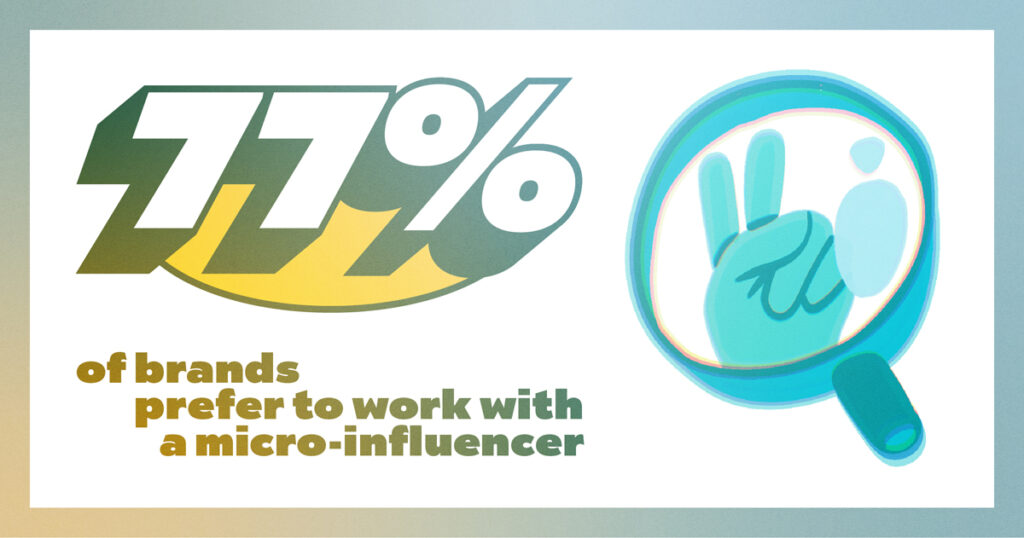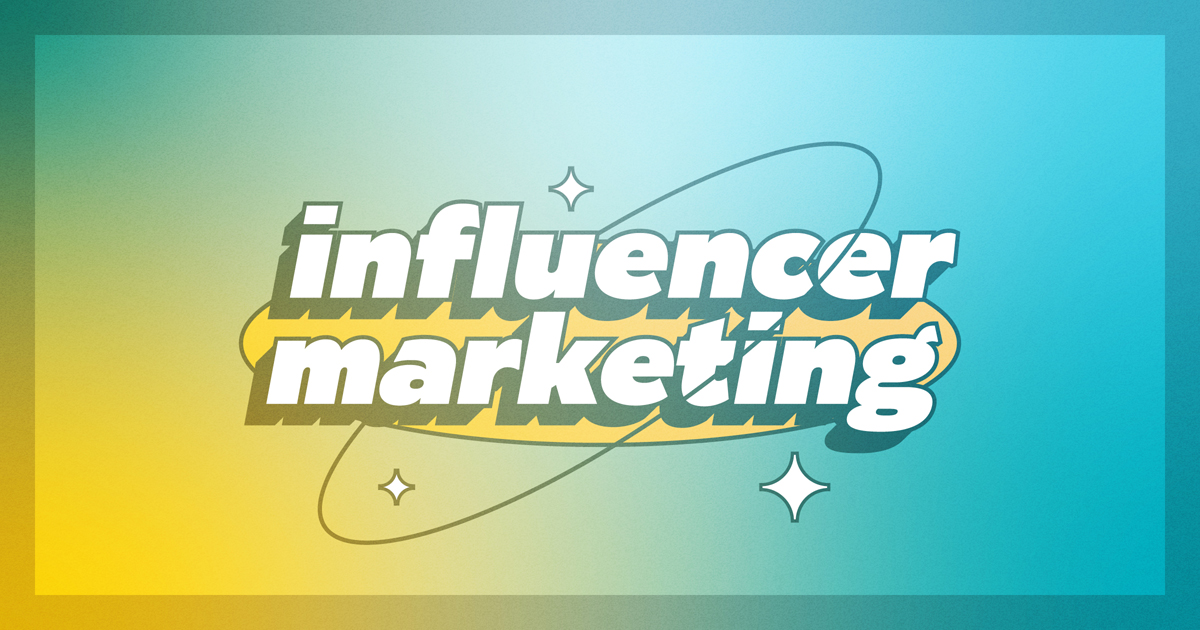10.31.23 | Read time: 4 min
How to Implement Influencer Marketing
Sophie Campbell
Welcome to the age of the influencer.
Those ubiquitous beings on our small screens wield tremendous power. Influencers have evolved into trendsetters and real-time product testers, with “81% of social marketers describing influencer marketing as an essential part of their social media strategy,” says Sprout Social.
As they started to saturate your TikTok or Instagram feed, influencers began as frequent social media users with thousands of followers. Today, marketers harness these influencers’ followings through influencer marketing to better reach their target audiences. Where traditional media has long been known for delivering brand awareness, influencer marketing has exploded due to the ability to target niche audience groups and established trust influencers have with their audiences.
Feeling skeptical of influencer marketing? Let’s dive in to find out exactly what it is and how it can be a game changer for your business.
Influencer Marketing Explained
Brand partnerships have existed roughly since 2006, when bloggers and marketers began coordinating paid content together using the platform PayedToPost. During this time, marketers paid bloggers to mention their brand in a blog post or write about their product in a review.
Since then, influencer marketing has exploded. Influencer Marketing Hub reports that influencer marketing has grown into a $21.1 billion industry. This is a big jump from the early days of TikTok and Instagram Reels in 2017, when the market was $1.7 billion.
Influencer marketing involves a partnership between a company and a popular social media user. In exchange for marketing a business’s products or services, influencers receive money or products. Influencers have a significant impact on consumer purchasing decisions, to the point that consumers trust them like family.
There is a common misconception that only celebrities can be influencers. While it is true that celebrities are in the influencer game, Shopify reports that 77% of brands prefer to work with an influencer that has a smaller following, known as the micro-influencer.

Here’s a breakdown of the influencer tiers:
Micro-influencer: 10,000-100,000 followers
Macro-influencer: 100,000-1M Followers
Mega-influencer: 1M+ Followers
Basically, the bigger the audience, the higher the cost.
While a mega-influencer may make sense for a national brand like Chipotle, a smaller local business simply trying to reach their city’s residents, such as in Boise, wouldn’t need that reach. Instead, various Boise or Treasure Valley-based micro-influencers utilized throughout a marketing campaign would be more effective in reaching their target audience.
Just as we pay a higher rate for ads on top-rated radio or TV stations, marketers pay more for mega-influencers to talk about their business on social channels like Instagram and TikTok. To better understand how social media influencer marketing can be successful, let’s talk about how TikTok has changed the game.

TikTok Boom
A social media platform launched in 2016, TikTok is now one of the most downloaded apps in the marketplace. The platform keeps its users scrolling with short-form videos created for and by users. Influencer partnerships feel less commercialized, as the platform is geared toward authentic reactions and real-time product use. This “real” feel to content has made TikTok the prime spot for influencer marketing.
While Instagram still carries the load, with 99% of Influencers using their platform, 66% of influencers are now using TikTok, according to Digital Information World. Marketers are following their audiences, incorporating TikTok into their influencer marketing due to the platform’s younger audience and precise algorithm. This algorithm offers a personalized user experience, feeding recommendations for new and relevant content. Buffer identified the key elements of TikTok’s algorithm: engagement, user interactions, video information, and device and account settings. These elements work together to serve relevant and popular content unique to each user.
It isn’t just the Gen Z audience and endless feed of relatable content that entices marketers; short-form video also has the highest ROI. In addition, users are investing time on the app, spending an average of 56 minutes per day watching TikTok videos, reports Insider Intelligence. The platform has also proved to be great for lead generation and engagement.
With the growing social influencer market, influencers generate value on these platforms. Here’s how some platforms are keeping creators motivated and engaged to stay creating on their apps:
YouTube has begun short-form video monetization to lure TikTok and Reel users to create using their short-form videos.
Instagram and TikTok started subscription services, meaning that creators can monetize by offering exclusive content and benefits to their most engaged followers at a monthly fee.

Best Practices
Jumping into the world of influencer marketing can be intimidating. But not to worry. Here are some best practices to keep in mind for your influencer marketing strategy:
Choose a social platform that best suits your audience. If you want to reach an older audience, TikTok isn’t the place. Evaluate what social platforms your target audience uses and put your energy into reaching them there.
Evaluate influencers based on follower growth and engagement metrics. While some influencers have a large following, their posts may have little engagement (comments, shares, saves, etc.). Consider these metrics when partnering with a potential social media influencer for your brand.
Review what is or was trending on TikTok with TikTok Shop. This is TikTok’s updated list of what’s currently trending. You can use it to forecast influencer marketing efforts for an upcoming campaign by viewing the topic with the highest click-through rate or looking at what was trending last year.
Stay nimble. The right influencer for your audience may change, which can happen quickly. Remember to review your efforts and reach and be open to exploring new social influencers that better align with your business.
Need help implementing influencer marketing? Get in touch.

